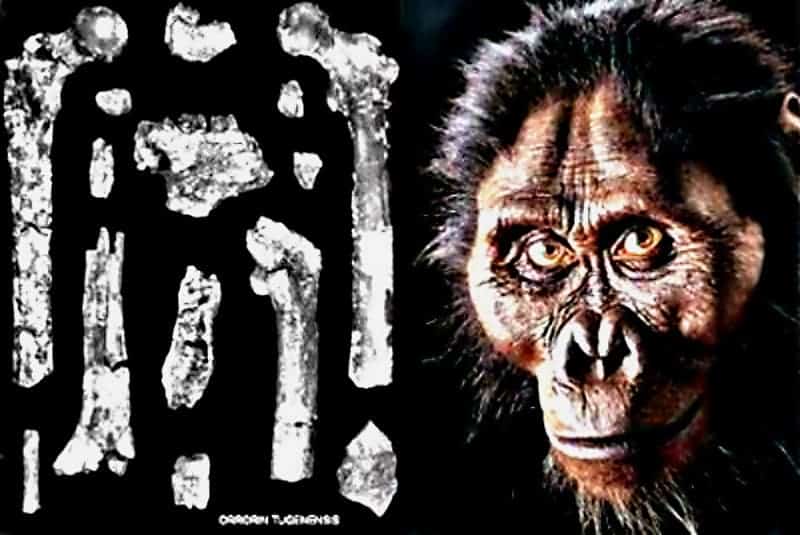
Homo sapiens, as compared to other species, have had by far the greatest impact on the planet in the shortest amount of time. Today, we number over seven billion and have altered the environment around us so much that we’ve brought about a new geological era fashioned in our image — the Anthropocene.
We’ve sent spacecraft close to the edge of the solar system, landed on the moon, written epic poems and literature, and split the atom. However, only a few thousand years ago, humans were widely dispersed around the world in compact and fragile tribes that were at the mercy of the elements.
Go back in time enough and you’ll find a population of Homo sapiens who were the ancestors of all humans living today. If you went even further, you’d find inflection points where our lineage met up with Neanderthals, then chimps, and eventually all primates, mammals, and the very first life forms.
What a ride! What’s really amazing, though, is how scientists can piece together this evolutionary history using only the tools at their disposal.
Let’s dive deep and take a look at some of the major events in the development of the human species, Homo sapiens, as well as the evolution of humanity’s ancestors.
Sahelanthropus tchadensis (6-7 million years ago)
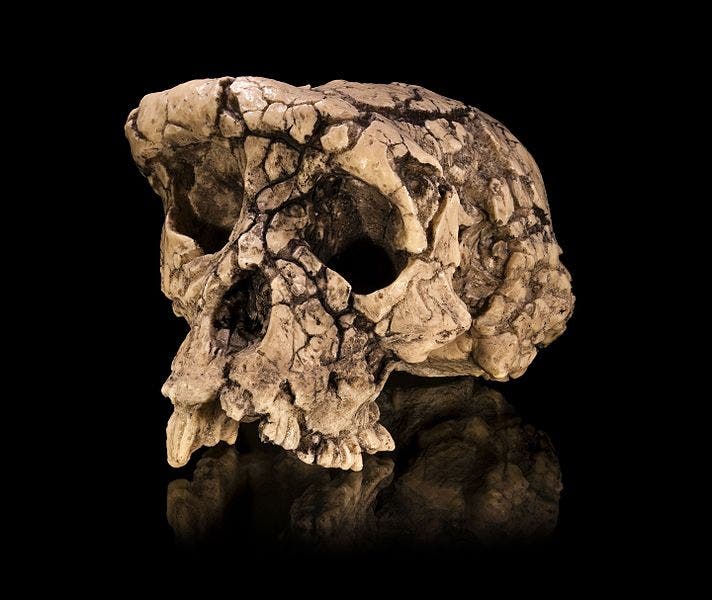
Between 6 and 7 million years ago, in the forests and grasslands of West-Central Africa (today it’s the country of Chad) lived one of the oldest known species in our family tree. Discovered in 2001, and known only from a skull and teeth, Sahelanthropus is famous for being one of the first upright walkers — the trait that defines the hominin lineage.
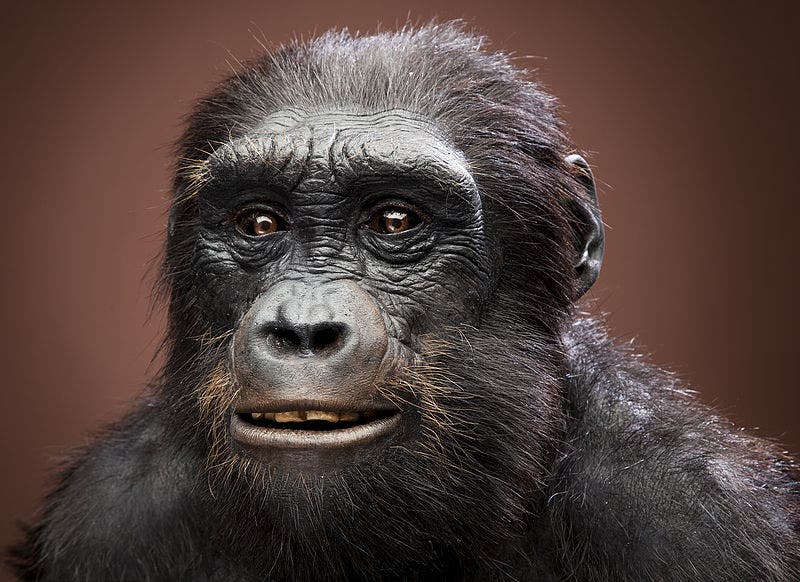
The species had a combination of ape-like and human-like features. Its brain was small (slightly smaller than a chimp’s) with a sloppy face and prominent brow. However, it also possessed strikingly human-like features like small canine teeth and a spinal cord opening beneath the skull rather than towards the back (as encountered in non-bipedal apes).
Orrorin tugenensis (6 million years ago)
Also discovered in 2001, this time in the Tugen Hills region of central Kenya, Orrorin tugenensis is another prime example of early upright locomotion. It is the only species in the genus Orrorin.
More than a dozen fossils of this species have been excavated thus far, dating between about 6.2 million and 6.0 million years old. Its name means “original man in the Tugen region,” in the local language.
Orrorin tugenensis individuals were about the size of a chimpanzee and had small teeth lined with thick enamel, much like modern humans. Their most important body part was their upper femur, which had evidence of bone buildup typically seen in a biped’s. Scientists think Orrorin tugenensis climbed trees but were also capable of walking upright.
Ardipithecus kadabba (5.2-5.8 million years ago)
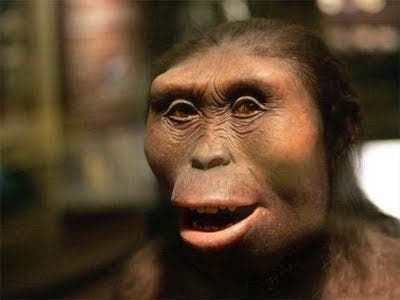
This early hominin is known in the fossil record by a few post-cranial bones and some teeth, but also hand, arm, and foot bones, as well as a clavicle. The bipedal Ardipithecus kadabba (‘kadabba’ means ‘oldest ancestor’ in the Afar language) was chimpanzee-like in body proportions and brain size, but had canines that resemble later hominins. We know it likely walked upright judging from the large toe that has a broad and robust appearance.
Its fossils were discovered in the Middle Awash region of Ethiopia in 1997. Judging from fossil animal evidence retrieved from the same site, these early human likely lived in a mixed habitat of woodlands and grasslands.
Ardipithecus ramidus (4.4 million years ago)
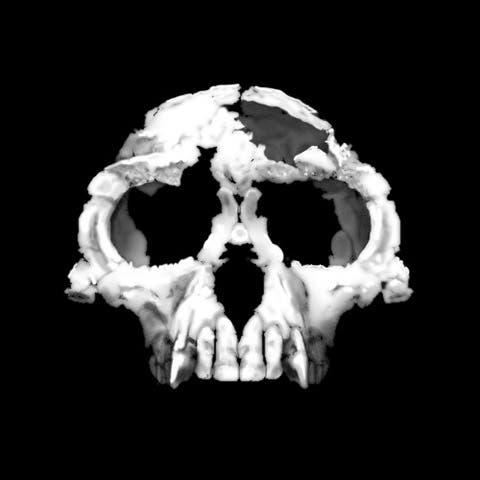
The earliest hominin with the most extensive evidence for bipedalism is the 4.4-million-year-old Ardipithecus ramidus. The first fossils of this species were discovered in 1994 but it was only in 2009, after extensive analysis, that researchers announced their results, introducing the world to a nearly complete skeleton nicknamed ‘Ardi’. The species was named after ‘ramid’, which means ‘root’ in the Afar language of Ethiopia and refers to the closeness of this new species to the roots of humanity, while ‘Ardi’ means ‘ground’ or ‘floor’.
Ardi’s foot bones are comprised of a divergent large toe combined with a rigid foot, which indicates bipedal locomotion. The pelvis has features that suggest it was suited for both tree-climbing and upright walking. Scientists have argued that Ardipithecus ramidus is indicative of a human-African ape common ancestor that was not chimpanzee-like, in contrast to other hominins before it. There was little difference in size between males and females, judging from the sampled canine teeth.
Based on the faunal remains found alongside Ardi’s skeleton, she likely lived in a wooded environment. This is in direct violation of the ‘open savanna theory’ for the origin of bipedalism.
Australopithecus anamensis (3.9-4.2 million years ago)
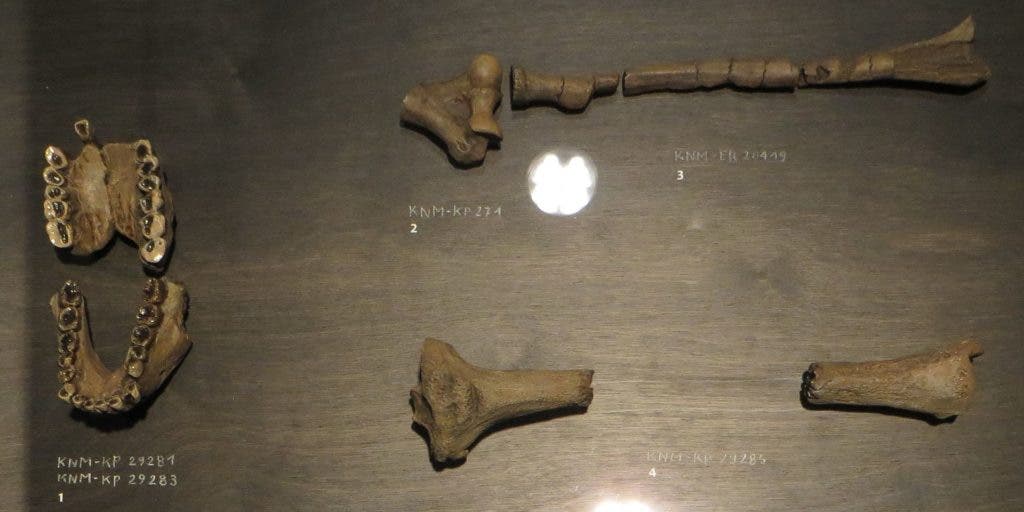
Australopithecines are the first human ancestors to live in the savannah. Australopithecus anamensis has a combination of ape and human features, such as long forearms and adapted wrist bones indicative of tree-climbing along with a shin bone with an expanded area of bone and human-like orientation of the ankle joint. ‘Anam’ means ‘lake’ in the Turkana language spoken by the locals in Kanapoi in northern Kenya, where the first fossils were found.
Australopithecus afarensis (2.95-3.85 million years ago)
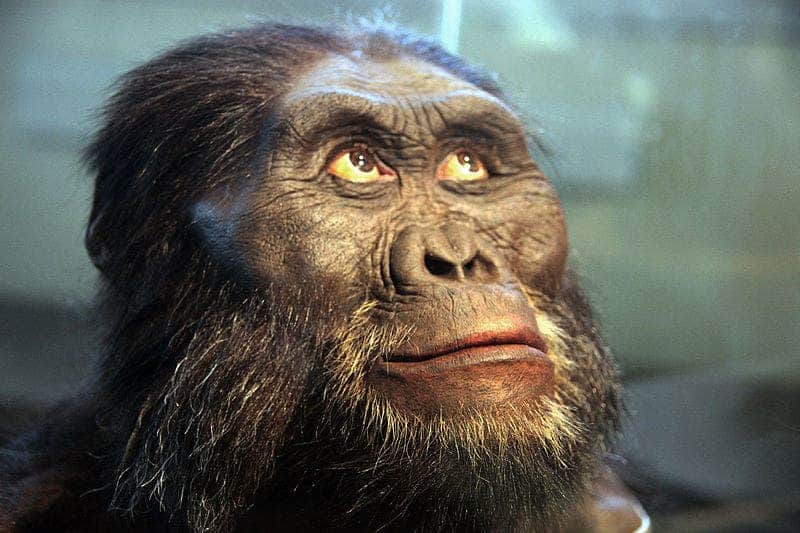
This species is one of our best-known ancestors due to a number of major discoveries, including a set of fossil footprints and a fairly complete fossil skeleton of a female nicknamed ‘Lucy’. She was nicknamed ‘Lucy’ after the song ‘Lucy in the Sky with Diamonds’ by The Beatles. More than 300 Australopithecus afarensis individuals have been discovered thus far in Ethiopia, Kenya, and Tanzania.
Like chimpanzees, A. afarensis children grew rapidly after birth and reached adulthood earlier than we modern humans do. However, this left individuals with less time for parental guidance and socialization during childhood.
Similar to other primitive hominins, A. afarensis had both ape and human-like features. Its face had ape-like proportions, featuring a flat nose and a strongly protruding lower jaw, and the braincase housed only 500 cubic centimeters of brain (just 1/3 the size of a modern human brain). Its long, strong arms with curved fingers were adapted for climbing trees. However, its small canine teeth were very human-like and its body stood on two legs. It seems like this double adaptation for living both in the trees and in the ground helped A. afarensis become a highly successful species, as it survived for almost a million years through changing climate and environments.
Besides fossils indicative of bipedal locomotion, scientists also discovered A. afarensis footprints in Tanzania, East Africa, dated to 3.6 million years ago. The quite human-like footprints were made by hominins that walked through a layer of ash burst that had settled on the ground after a distant volcano erupted. The footprints are of major significance as they are the first direct evidence (i.e. not fossil bones) that our ancestors were walking upright 3.6 million years ago.
Kenyanthropus platyops (3.2-3.5 million years ago)

Not much is known about Kenyanthropus platyops, whose name means ‘flat face’. Kenyanthropus inhabited Africa at the same time as Lucy’s species Australopithecus afarensis and was a flat-faced (a human feature), small-brained, bipedal hominin.
The species remains an enigma: some claim it’s a bridge between the walking apes and modern humans, deserving an entirely new genus for itself, while others classify it as a separate species of Australopithecus — Australopithecus platyops.
Australopithecus africanus (2.1-3.3 million years ago)
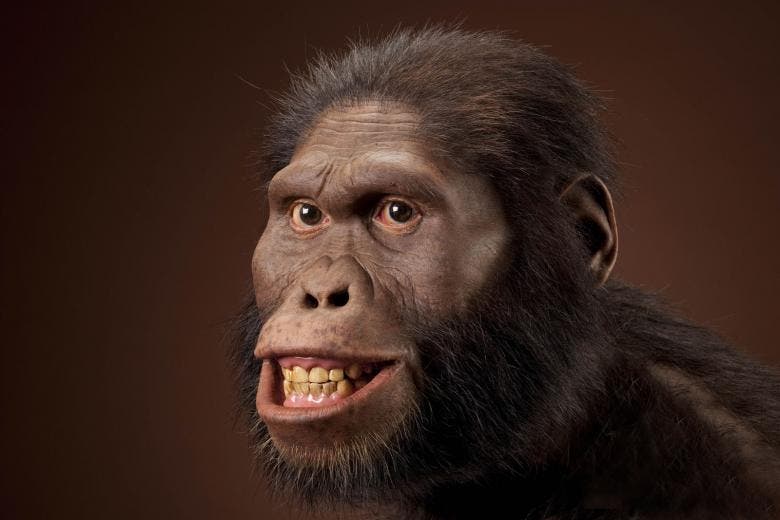
The Taung child, which was found in 1924, provided the first evidence that early humans inhabited Africa. Prof. Raymond Dart was the first to describe the species and named it Australopithecus africanus (meaning southern ape of Africa). He claimed the species was an intermediate between apes and humans but it took more than 20 years for the scientific community to widely accept Australopithecus as a member of the human family tree.
Australopithecus africanus was anatomically similar to A. afarensis, with a combination of human-like and ape-like features — another hominin that adapted to both climbing trees and walking upright. Its skull was bigger and housed a bigger brain than A. afarensis, however. It is also thought to be a direct ancestor of modern humans.
Paranthropus aethiopicus (1.2-2.3 million years ago)

Paranthropus aethiopicus was a species originally proposed in 1967 by a team of French paleontologists who analyzed an incomplete mandible. At the time, scientists thought it was too early to describe a new species based on such little evidence. However, in 1985, Alan Walker and Richard Leakey discovered the famous “Black Skull” west of Lake Turkana in Kenya, which validated that claim that we had found a new “robust” australopithecine species.
P. aethiopicus had a strongly protruding face, large teeth, a powerful jaw, and a well-developed sagittal crest on top of the skull, as well as huge chewing muscles — all adaptations that enabled this hominin to chew with a large force.
Paranthropus boisei (1.2-2.3 million years ago)
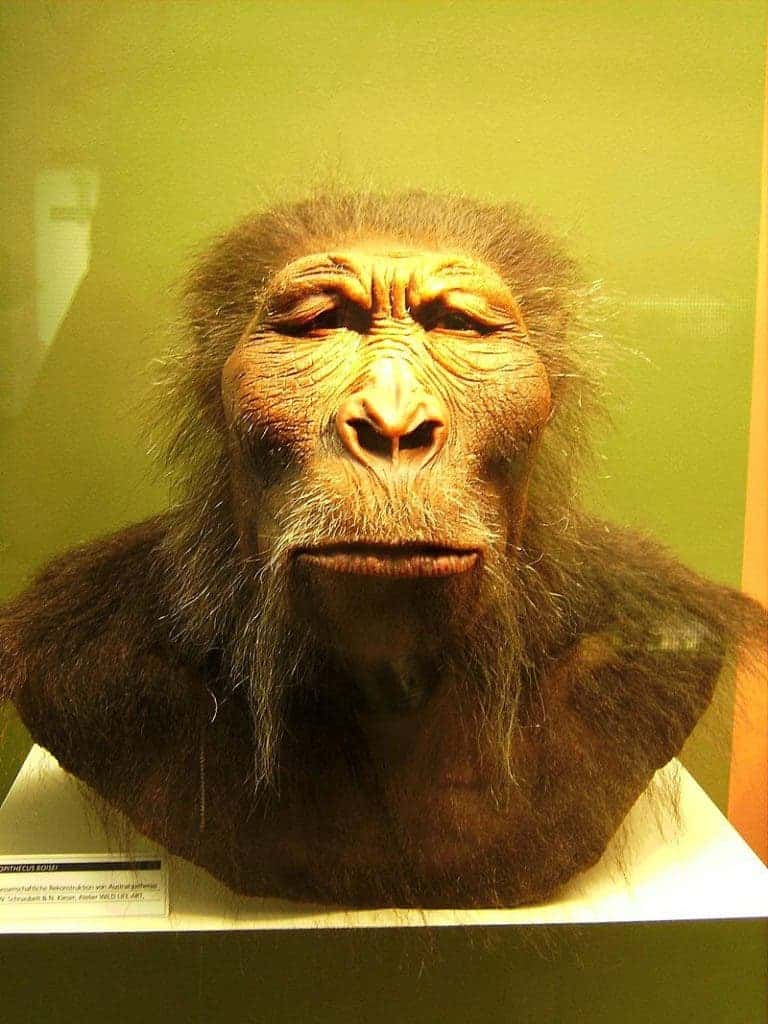
In 1959, Mary Leakey discovered the ‘Zinj’ skull, which became the type specimen for P. boisei. These early human fossils, unearthed from Olduvai Gorge in northern Tanzania, indicate large, flat cheek teeth and thick enamel. For this reason, the ‘Zinj’ skull is often nicknamed the ‘Nutcracker Man.’
The flaring cheekbones made P. boisei’s face appear very wide and dish-shape, allowing bigger jaw muscles to grow and support massive cheek teeth that were four times the size of modern human’s.
P. boisei is often described as the largest of the Paranthropus genus (robust australopithecines). The relatively small brain size of 550 cm3 is similar to that of Australopithecus afarensis and Australopithecus africanus. Males were larger than females, as is true of all australopithecine species, standing 1.37 and 1.24 meters tall respectively.
Homo habilis (1.4-2.33 million years ago)
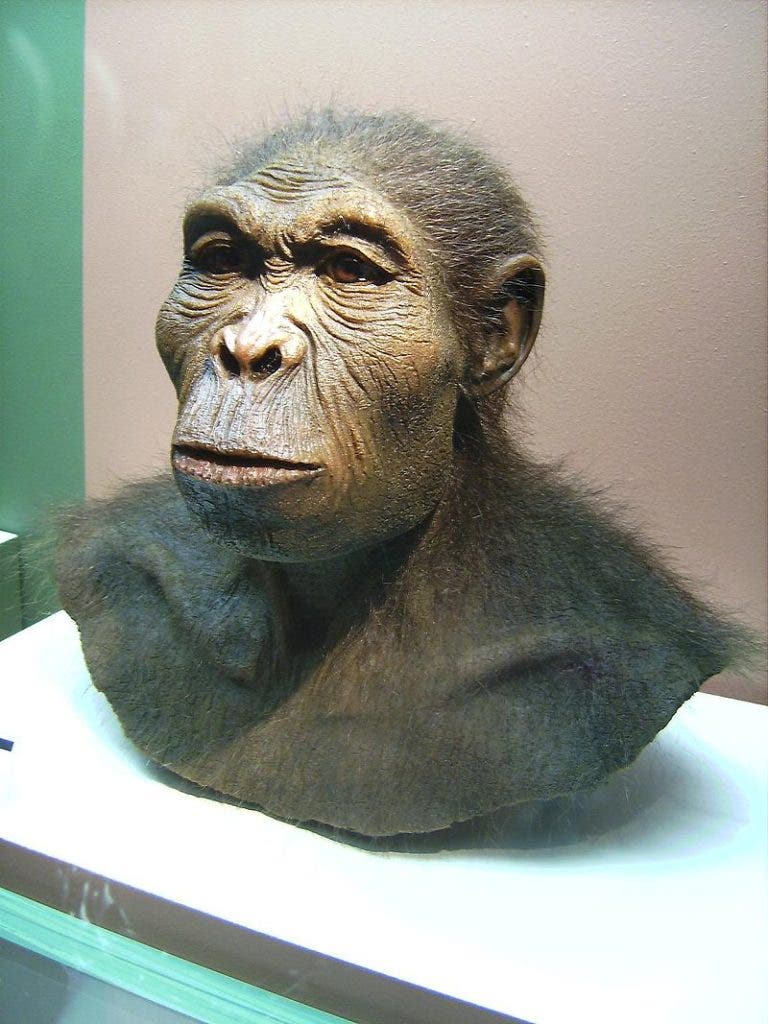
Known as ‘Handy Man’, Homo habilis is a species of the genus Homo which lived during the Gelasian Pleistocene period. Mary and Louis Leakey discovered the hominin’s first fossils in Tanzania between 1962 and 1964.
Its appearance is the least similar to modern humans of all species in the genus. Homo habilis was short, standing only 3 ft 4 inches to 4 ft 5 inches (100 – 135 cm) in height. It had disproportionately long arms compared to modern humans, but it had a far less protruding face than australopithecines, from which scientists think it descended. Its cranial capacity was bigger than australopithecines but still rather small — only half the size of modern humans.
The species was nicknamed ‘Handy Man’ due to the fact that the hominin is thought to have mastered the Lower Paleolithic Olduwan tool set which utilized stone flakes. Homo habilis is thought to be the ancestor of Homo ergaster, itself the ancestor of Homo erectus. It’s quite possible that Homo habilis is a direct ancestor of modern humans, but this is still a matter for debate among scholars.
Homo rudolfensis (1.8-1.9 million years ago)

Richard Leakey’s team uncovered Homo rudolfensis fossils near the shores of Lake Rudolf (now known as Lake Turkana) in 1972, and it was named by Russian scientist V.P. Alexeev in 1986. Only one really good fossil of H. rudolfensis has ever been found and, initially, scientists thought it belonged to H. habilis. With a braincase size of 775cm3, H. rudolfensis had a considerably larger brain case than H. habilis. In any event, Homo rudolfensis was contemporary with Homo habilis and the two likely interacted.
Homo ergaster (1.3-1.8 million years ago)

This is one of the earliest species of the Homo genus that lived in eastern and southern Africa during the early Pleistocene. Homo ergaster means ‘workman’ — a name given to the hominin for its advanced lithic technology.
Hand axes found at Saint-Acheul in France that are thought to have been shaped by H. ergaster indicate that the hominin manufactured tools similar to early humans during the Lower Palaeolithic era. The technology, characterized by oval and pear-shaped bifacial hand axes and called the Acheulean industry, was the dominant form of tools for the vast majority of humans.
Remarkably, some argue that Homo ergaster may have been the first hominin to use a ‘human’ voice and a proto-language. There is no archaeological evidence to suggest this, but the species’ cervical vertebrae, well-evolved brain, and other physical capabilities suggest it may have had the necessary biological machinery for voicing words and using symbolic thought, such as figurative art.
While its ancestry is still debated, Homo ergaster is thought to be the direct ancestor of later hominins such as Homo heidelbergensis, Homo sapiens, and Homo neanderthalensis, as well as Asian Homo erectus.
Homo erectus (200,000-1.89 million years ago)
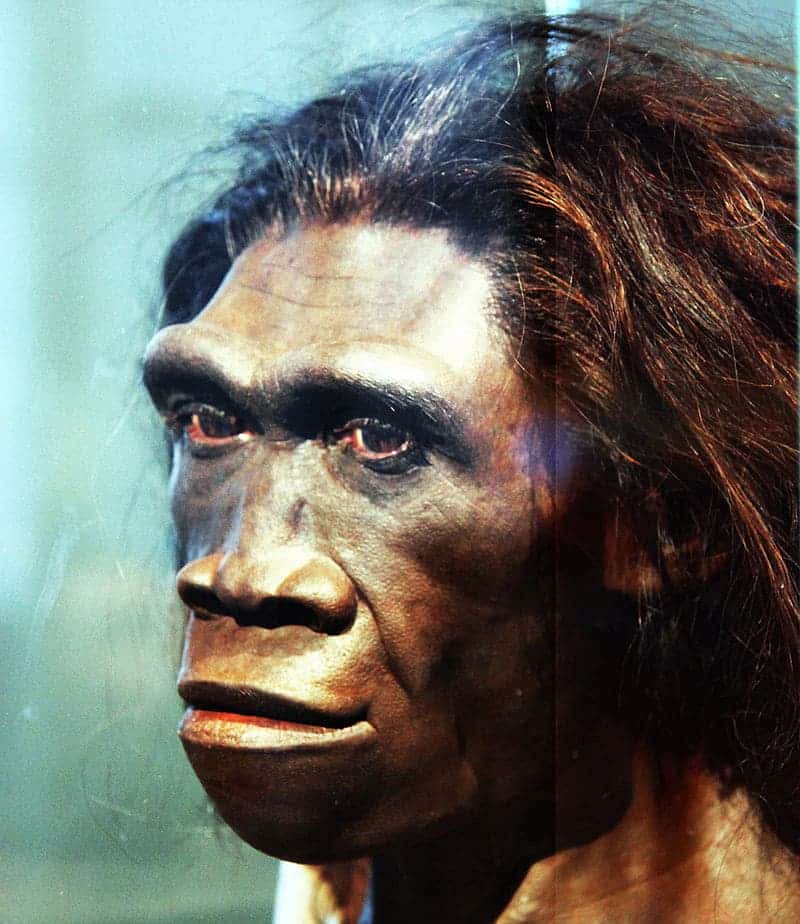
Early hominins were capable of upright walking but they didn’t exactly get around as we do today, as indicated by their adaptation for tree climbing. They still retained primitive features, such as long, curved fingers and toes, as well as longer arms and shorter legs — that is, until H. erectus (meaning ‘upright man’) came into the picture about 1.89 million years ago. During this time, the climate in Africa turned drier, facilitating open environments suited for walking.
Homo erectus had little body hair, so it was able to shed heat and be active throughout the day. The appearance of the vestibulocochlear apparatus — an organ of balance and movement change present in modern humans — allowed H. erectus to see distant targets well. These adaptations may have heralded a change from scavenger to hunter in our species’ lineage. This is further evidenced by the hominin’s smaller gut and teeth relative to its predecessors, which suggest it had a better diet. Bone protein released during fire suggest that H. erectus also knew how to make fire or, at least, how to exploit when necessary.
This is hominin grew tall and had long legs, making it a completely terrestrial creature. It may have used a proto-language, as indicated by the vertebrae fossils of Homo erectus georgicus, a sub-species of Homo erectus.
Homo heidelbergensis (200,000-700,000 years ago)
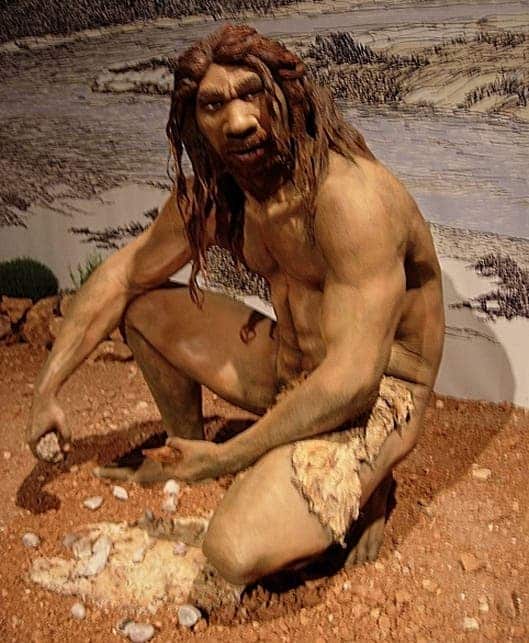
Homo heidelbergensis was a sophisticated hunter and tool maker. The hominin was relatively tall — 163.6 cm on average — and had a larger average brain capacity than modern humans.
Fire-altered tools and burnt wood at the site of Gesher Benot Ya-aqov in Israel suggests that H. heidelbergensis was capable of controlling fire by building hearths (early fireplaces) by 790,000 years ago.
H. heidelbergensis was also the first hunter of large game animals; remains of animals such as wild deer, horses, elephants, hippos, and rhinos with butchery marks on their bones have been found together at sites with H. heidelbergensis fossils.
With regards to its social behavior, H. heidelbergensis may have been the first species of early humans to bury their dead. The species also likely practiced personal adornment, as indicated by the discovery of red ochre at Terra Amata, and quite possibly utilized a proto-language.
Homo neanderthalensis probably diverged from Homo heidelbergensis roughly 300,000 years ago in Europe; Homo sapiens probably diverged between 100,000 and 200,000 years ago in Africa.
Homo rhodesiensis (125,000-400,000 years ago)
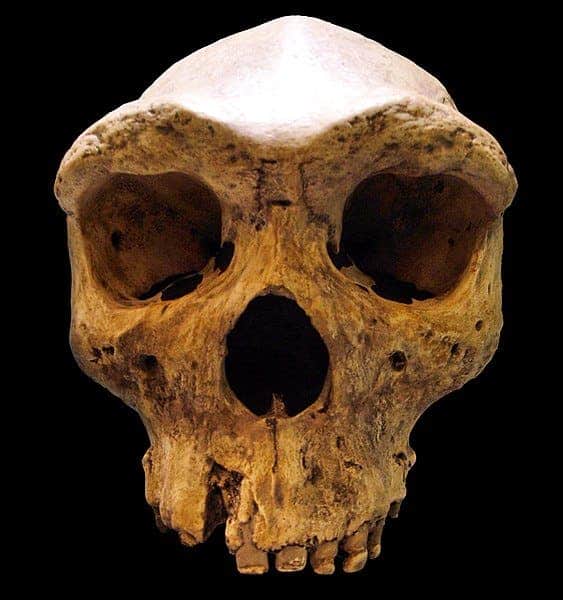
Homo rhodesiensis was robust, with very large brow ridges and a broad face. For this reason, it is sometimes referred to as the ‘African Neanderthal’, although the title might be a bit too much. Nowadays, anthropologists consider that H. rhodesiensis has intermediate features between Homo sapiens and Homo neanderthalensis.
Some argue it is the ancestor of Homo sapiens idaltu, which itself was the ancestor of Homo sapiens sapiens, our species.
The ‘Rhodesian man’ fossil skull was discovered at Broken Hill in Northern Rhodesia, now Zambia, by Tom Zwiglaar in 1921.
Homo neanderthalensis (40,000-400,000 years ago)
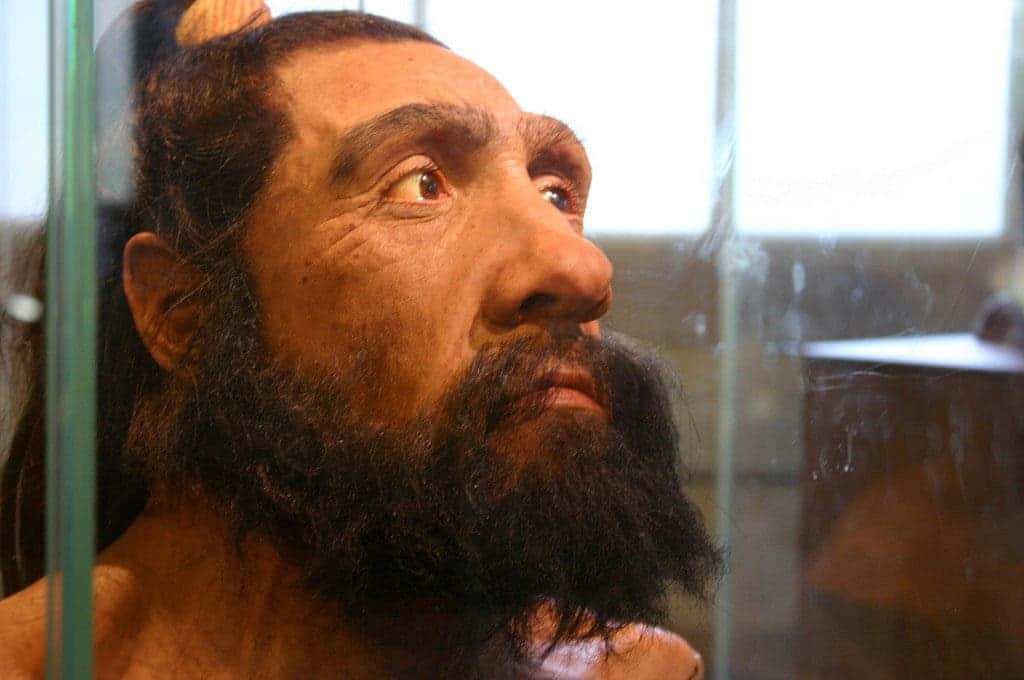
The Neanderthals are our closest extinct human relatives.
In 1829 at Engis, Belgium, and in 1848 at Forbes Quarry, Gibraltar, scientists excavated Neanderthal fossils — the first early human fossils ever found.
The name ‘Neanderthal’ was chosen because of the location of the first confirmed specimen of the species — in the Feldhofer Cave of the Neander Valley in Germany. Tal, or thal, means “valley” in German. The fossils in Belgium and Gibraltar weren’t initially recognized at the time of their discovery.
Neanderthals were shorter but bulkier than modern humans. Defining features include a protruding brow ridge and angled cheekbones.
The Neanderthals adapted to cold climates, having a big nose that was good at humidifying and warming the cold, dry air.
There’s this myth of the neanderthal brute, but recent evidence suggests our long-lost relatives weren’t all that different from us. Their brains were just as large, if not bigger, than ours. Archaeological evidence suggests they were skilled hunters and craftsmen who knew how to control fires and raise shelters. They made and used clothing and fashioned symbolic and ornamental objects.
They also buried their dead and, occasionally, marked graves with ornaments, such as flowers. This sort of behavior has never been practiced by another primate or early human species that we know of.
Scientists have recovered and sequenced the DNA from over a dozen Neanderthal individuals as part of the Neanderthal Genome Project. We now know that non-African modern humans alive today share as much as 4% of their DNA with Neanderthals — the byproduct of ancient inter-breeding.
We don’t know for sure what killed the Neanderthals off. It might have been competition with Homo sapiens, climate change, or both. Neanderthals were a successful species and they were likely as smart as humans — but they were still fragile enough to get wiped out, which should get all of us thinking. At the end of the day, we all carry a bit of Neanderthal with us.
Denisova hominin (765,000-48,000 years ago)
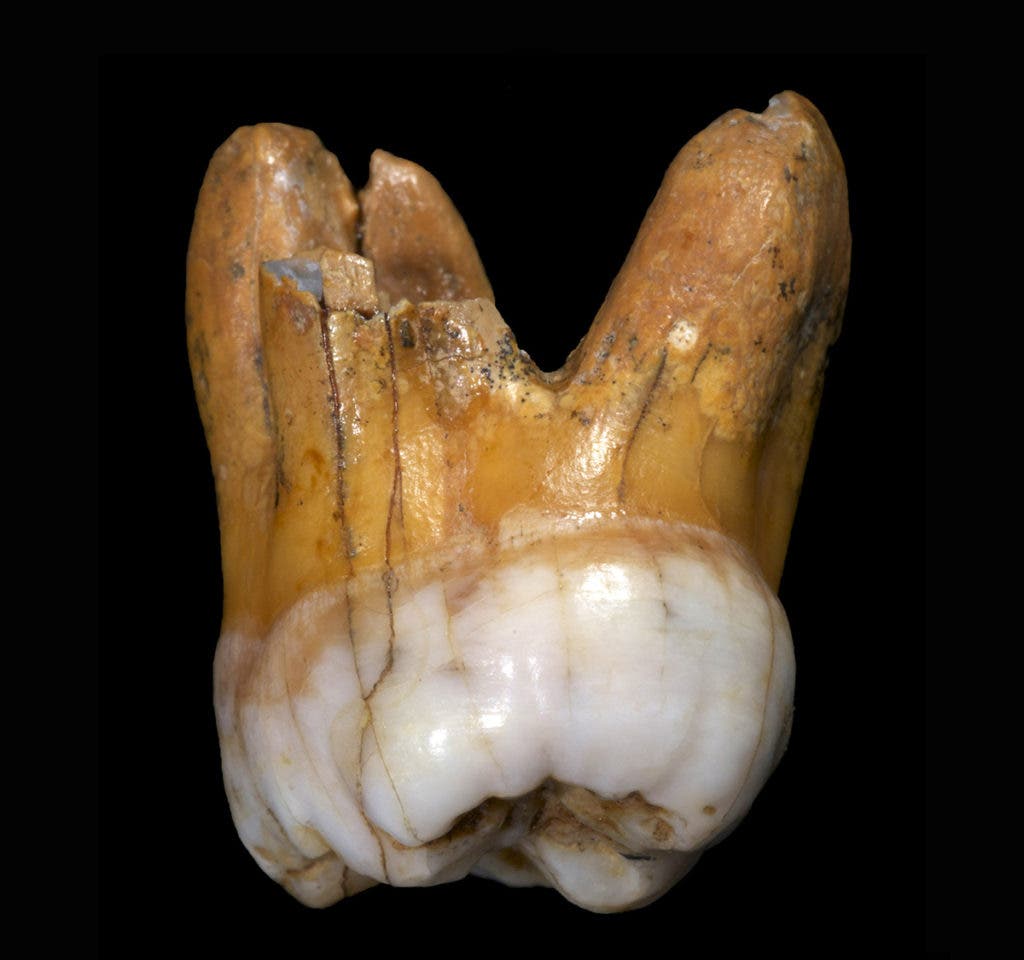
Besides Neanderthals, anatomically modern humans co-existed with a third species of Homo called Denisovans. The Denisovans occupied a vast realm stretching from the chill expanse of Siberia to the steamy tropical forests of Indonesia, suggesting that the third human of the Pleistocene was quite adaptable.
The species was first identified in March 2010 when scientists found a finger bone fragment of a juvenile female in the remote Denisova cave in the Altai mountains of Siberia. Analysis of the mtDNA of the finger bone showed it to be genetically distinct from the mtDNAs of Neanderthals and modern humans. However, subsequent studies suggest that the Denisovans shared a common origin with Neanderthals around 1 million years ago.
The conclusions of both the excavations and sequencings are up for debate since the Denisova Cave has been occupied by all three human forms.
Interestingly, up to 6% of the DNA of Melanesians and Australian Aborigines comes from Denisovans.
Homo floresiensis (???-50,000 years ago)

Homo floresiensis is a possible species in the genus Homo, which may have lived up to as early as 13,000 years ago.
In 2003, the partial skeletons of nine individuals were recovered from the Liang Bua Cave on the island of Flores in Indonesia. Stone tools made by this species that were found in the same cave date to between 50,000 and 190,000 years old.
This tentative species of Homo is also called the ‘Hobbit’ due to the hominin’s small body and brain. These individuals were 3 feet 6 inches (1 meter) tall and had large teeth for their small size, shrugged-forward shoulders, no chins, receding foreheads, and relatively large feet due to their short legs.
Scientists think that H. floresiensis’ diminutive stature and minuscule brain are the result of island dwarfism — an evolutionary process where long-term isolation on a small island with limited resources and lack of predators causes organisms to grow small in size. Pygmy elephants on Flores, now extinct, showed the same adaptation.
Homo sapiens (300,000 years ago-present; you are here!)

It is largely believed that during a time of dramatic climate change 300,000 years ago, Homo sapiens evolved in Africa. That’s us!
Modern humans are characterized by a lighter skeletal build than earlier human species. One of the most defining traits of the species is the very large brain, which varies in size depending on population and sex, but on average is approximately 1,300 cubic centimeters. To house such a big brain, humans have had to reorganize the skull, which is now thin-walled and high vaulted with a flat and near vertical forehead. This is in stark contrast to the heavy brow ridges and prognathism of earlier species of Homo. Our jaws are also less heavily developed and contain smaller teeth.
An analysis of mitochondrial DNA has demonstrated that the greatest level of genetic diversity in modern humans occurs within the African continent, represented by the mtDNA macro-haplogroup L. This points to the fact that our species originated in Africa.
According to a 2017 study published in Nature, the oldest modern human specimen was found in an unlikely place: Morocco. The skull, face and jaw bones were identified at an archaeological site near the Atlantic coast and dated to 315,000 years ago. Previously, most researchers had placed the origins of our species in East Africa about 200,000 years ago.
“Until now, the common wisdom was that our species emerged probably rather quickly somewhere in a ‘Garden of Eden’ that was located most likely in sub-Saharan Africa,” Jean-Jacques Hublin, an author of the study and a director at the Max Planck Institute for Evolutionary Anthropology in Leipzig, told Nature. Now, “I would say the Garden of Eden in Africa is probably Africa — and it’s a big, big garden.”
For years, the prevailing narrative was that our species emerged in some isolated location in Africa, then expanded towards Europe and Africa through the Middle East in one great ‘Out of Africa’ migration. Now, scientists argue that the actual story of human dispersal if far more complex than this simplified narrative. Yes, humans originated in Africa, but according to the theory of “African multiregionalism,” they didn’t appear in one single place; rather, the cradle of humankind was the entirety of Africa. This may sound like a difficult concept to grasp because we’re so used to the conceptual framework of family trees, but as Ed Young eloquently puts it:
“The best metaphor for this isn’t a tree. It’s a braided river—a group of streams that are all part of the same system, but that weave into and out of each other.”
“These streams eventually merge into the same big channel, but it takes time—hundreds of thousands of years. For most of our history, any one group of Homo sapiens had just some of the full constellation of features that we use to define ourselves.”
The original ‘Out of Africa’ theory states that early Homo sapiens ancestors dispersed around the world by leaving an African hotspot 60,000 years ago. But in the past fifteen years, a great deal of archaeological and paleontological evidence, as well as genetic findings, have placed this hypothesis into question. Homo sapiens fossils dated between 70,000 to 120,000 years old were discovered in China and southeast Asia, and some even as far as Australia dated to 60,000 years ago. Human fossils found in the Skhul and Qafzeh caves in Israel that predate the Out of Africa timeframe are also worthy examples. If humans had barely begun to exit Africa 60,000 years ago, how can we explain these other findings?

The most plausible explanation is that humans indeed embarked on a massive wave of migration around that time, possibly spurred by a changing climate. However, before this truly massive undertaking, early hunter-gatherers must have migrated in smaller waves.
“The initial dispersals out of Africa prior to 60,000 years ago were likely by small groups of foragers, and at least some of these early dispersals left low-level genetic traces in modern human populations. A later, major ‘Out of Africa’ event most likely occurred around 60,000 years ago or thereafter,” explains Michael Petraglia of the Max Planck Institute for the Science of Human History in a statement.
We’re still pretty far away from unraveling all of the evolutionary twists and turns that eventually led us to where we’re at now: this strange species the likes of which the world has never seen, which is capable of so much beauty, but also equally intense moments of stupidity. But science is always full of surprises. What would be interesting is having a glimpse into the next step in our genus’ evolution. Will this new species of Homo replace Homo sapiens, like we probably did with the Neanderthals? What will it look like and will techniques like CRISPR capable of modifying genes with surgical precision play a role in its developments? All worthy things to consider. Please, leave your opinions in the comments.
